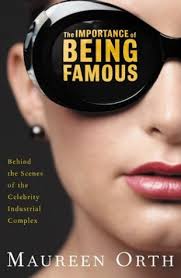-
Thursday, March 24, 2005
You go, girl! - Weldon says fem jounos and bloggers must band together and create HIGH-VIZ FIREBALL! [Hey, I'm game! Call HighVizPR! 1-800-380-2825]
Women in Op-Eds
By Michele Weldon, Women's eNews. As seen on AlterNet
Posted March 23, 2005.
The latest flare-up over the shortage of female op-ed writers on leading newspapers should not simply die down; female bloggers and journalists must cluster together and create a "fireball" of visibility.
Lipstick Jihad by Ann Marlowe
More stories by Michele Weldon
In My Big Fat Greek Wedding, a 2002 blockbuster written by and starring a woman who was given her big fat Hollywood break by another more connected woman, the paternal grandmother periodically erupts into an unintelligible rage about the war between the Turks and the Greeks. She is quickly calmed with a pat on the head and reverts to being the silent figure in the back of the room.
Such is the pattern, in the past couple of weeks, of the latest round of indignation in journalism circles triggered by an e-mail campaign by Susan Estrich to have more women's voices in the opinion pages of the Los Angeles Times (especially her own).
It began with some blatantly poor sportswomanship by Estrich who, after making callous remarks about the health of Michael Kinsley, an editor of the Los Angeles Times' opinion and editorial pages who has Parkinson's disease, threatened to start a web site to "out" his gender bias. Her methods raised the ire of many journalists, including those who sympathized with her essential point, that too few women are writing the leading opinion pieces.
An avalanche of sister soul-searching ensued, producing fiery dialogue, copious columns, television pundit fodder, blog blahblah, listserv swapping and conference topic firewood. After a vitriolic exchange between Estrich and a detractor, the team of Cynthia Allen and Lynn Kinney – from the Women in the Newsroom e-newsletter – called the back-and-forth "the verbal equivalent of small girls pulling each others' hair."
Meanwhile, as in the movie, nobody outside the family seems to grasp the content of the reactive noise-making.
Readers and fans of many columnists wonder why we're making a fuss. Aren't opinions published in Grade-A newspapers on the basis of merit, not gender? Isn't it an odd coincidence that mostly men write them? Some editors may be waiting until we all go back quietly to our corners so they can return to publishing as usual, not worrying about who writes what and how often.
That means all those producing the sound and the fury about the silencing of women are in danger of simply returning to the back of the newsroom. They shouldn't.
More mainstream-media soap boxes
While differing on whether they support Estrich's specific tactics, most of the people who have written about the incident agree that we need more women on the big-time media soap boxes.
In the first nine weeks of 2005, 10.4 percent of columns in The Washington Post opinion pages were written by women. At The New York Times, where Gail Collins is at the helm of the editorial pages, it's 16.9 percent. The Los Angeles Times, where the opinion pages are headed by Michael Kinsley (the target of the Estrich attacks and at the eye of the latest hurricane), nearly 20 percent of the editorials written by women.
The noise, meanwhile, is far from news. "The fact that women are articulating feelings of being shut out is so far from radical," said Jill Nelson, author, columnist for niaonline.com and former Washington Post magazine staff writer.
Almost two years ago to the day, journalist Caryl Rivers, in a commentary for Women's eNews, wrote: "Women's voices aren't heard and that de-legitimizes women, which in turn deepens the silence ... From opinion pages to brainy magazines to journals of opinion, women's voices are more muted than they have been in years."
"We've been talking about this for 30 years," said Lakshmi Chaudhry, senior editor of AlterNet.org. "Certain kinds of women who have certain kinds of things to say that are OK with the old boys network get to have these positions."
The talk about the "quota of one" at papers and magazines where journalists such as Maureen Dowd, Molly Ivins, Anna Quindlen, Ellen Goodman and Anne Applebaum fight the good fight is not new.
In fact it's old, like the war that the Greek grandma can't stop talking about.
More than a 'kerfluffle'
This latest chapter in Our Big Fat Op/Ed Wailing has to amount to more than a "kerfluffle" as Maureen Dowd of The New York Times called it.
It can't be that Applebaum of The Washington Post is a token and that this is nothing more than what she called "a storm in the media teacup." (She wrote in her Post column about feeling "lonely," as well as "self-conscious and vaguely embarrassed" to be the only woman on the opinion pages when she looks out and sees "so many excellent women around me at the newspaper.")
The cry for more space must be seen as more than a "hissy fit" as columnist Heather MacDonald wrote.
To gain visibility, Women's eNews, organizations, listervs and blogsters are out there working to get noticed.
"We are recruiting women opinion writers, dispensing tips on how to write and submit articles and letting editorial editors know where they can find authoritative female voices on a variety of topics," said Rosemary Armao, president of Journalism and Women Symposium, a national organization of more than 250 women working in print, broadcast, new media and academia.
Promoting national syndications
Holly Sklar, op-ed columnist for Knight Ridder newspapers and Tribune Information Services, said pushing women who are already doing the work at a regional level into national syndication and larger media venues is a solid solution.
"There are a lot of women all over the country who write columns at the regional level," Sklar said. "There are very powerful columnists who are certainly ready for the big leagues and more effort needs to be made to promote them."
At the "Women and the Media Conference" this past Saturday in Cambridge, Mass., hosted by The Center for New Words, Nelson said the solution is "cross-pollinating" efforts with a continued push for space for women in the established press as well as in Internet news outlets and blogs.
The Web blogs so popular with Generation Y – and now deemed worthy of press credentials by the White House – are the cyberspace answer to individual newsletters, cable-access shows and ham radio. All of these offer a wide-open range for opinion makers to bypass gate-keeping editors who seem to "just say no" to the women who come along.
Others agree with her.
"Given how corporate media is, for us to expect The New York Times to change is not going to happen," said AlterNet's Chaudhry. "We need to empower ourselves with blogs. Not only will we have our voices heard but we have access to the kind of women we want to read it."
Female bloggers need to link to each other and other outlets of women's opinions, print journalists need to support each other's editorial efforts and keep making noise by sending in queries, well-researched and written columns and knocking on the big doors at least as often as do the men. [I'm game!]
Instead of disappearing into the back of the room again, we must push the issue. Though many female journalists are opining 1,000 illuminated points of view in the media galaxy, unless we cluster our stars together into a fireball, we will not be seen by the major telescopes.
Michele Weldon is assistant professor at the Medill School of Journalism, Northwestern University and the author of I Closed My Eyes: Revelations of a Battered Woman (Hazelden, 1999).
Subscribe to:
Post Comments (Atom)











No comments:
Post a Comment